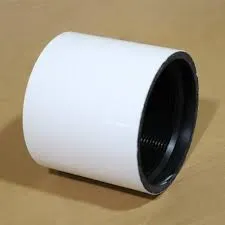- Afrikaans
- Albanian
- Amharic
- Arabic
- Armenian
- Azerbaijani
- Basque
- Belarusian
- Bengali
- Bosnian
- Bulgarian
- Catalan
- Cebuano
- Corsican
- Croatian
- Czech
- Danish
- Dutch
- English
- Esperanto
- Estonian
- Finnish
- French
- Frisian
- Galician
- Georgian
- German
- Greek
- Gujarati
- Haitian Creole
- hausa
- hawaiian
- Hebrew
- Hindi
- Miao
- Hungarian
- Icelandic
- igbo
- Indonesian
- irish
- Italian
- Japanese
- Javanese
- Kannada
- kazakh
- Khmer
- Rwandese
- Korean
- Kurdish
- Kyrgyz
- Lao
- Latin
- Latvian
- Lithuanian
- Luxembourgish
- Macedonian
- Malgashi
- Malay
- Malayalam
- Maltese
- Maori
- Marathi
- Mongolian
- Myanmar
- Nepali
- Norwegian
- Norwegian
- Occitan
- Pashto
- Persian
- Polish
- Portuguese
- Punjabi
- Romanian
- Russian
- Samoan
- Scottish Gaelic
- Serbian
- Sesotho
- Shona
- Sindhi
- Sinhala
- Slovak
- Slovenian
- Somali
- Spanish
- Sundanese
- Swahili
- Swedish
- Tagalog
- Tajik
- Tamil
- Tatar
- Telugu
- Thai
- Turkish
- Turkmen
- Ukrainian
- Urdu
- Uighur
- Uzbek
- Vietnamese
- Welsh
- Bantu
- Yiddish
- Yoruba
- Zulu
api tubing couplings
Understanding API Tubing Couplings An Essential Component in Oil and Gas Production
In the oil and gas industry, the seamless operation of extraction processes hinges on the reliability and functionality of various components, among which API tubing couplings play a crucial role. These couplings are integral to ensuring that the tubing used in wells remains secure, leak-proof, and capable of withstanding high pressures throughout its operational life.
What are API Tubing Couplings?
API tubing couplings are fittings that connect lengths of tubular goods, specifically oil and gas production tubing. The term API refers to the American Petroleum Institute, which sets the standards for quality and performance for various components in the oil and gas industry. Tubing couplings have the critical role of joining sections of tubing seamlessly while maintaining the integrity of the wellbore and the strength of the entire system.
The Importance of API Standards
The American Petroleum Institute has established rigorous standards (API Spec 5CT) that govern the manufacturing and use of tubing and casing components. This specification covers the technical requirements for the production of steel pipes used for well construction. The adherence to API standards ensures that couplings are produced with the necessary mechanical properties to withstand the extreme conditions found in oil and gas operations, such as high pressures, corrosive environments, and temperature variations.
API tubing couplings are designed not only for high durability but also for compatibility with different grades of tubing. They typically come in two main types integral and threaded. Integral couplings are part of the tubing itself, offering more strength, while threaded couplings are separate components that can be fastened together.
Material Composition and Types of Couplings
api tubing couplings

API tubing couplings are generally manufactured from carbon steel, which can be enhanced with different alloys to augment their strength and corrosion resistance. Couplings can also be coated or treated to provide additional protection against corrosion, especially in harsh environments encountered in offshore drilling or sour gas fields.
There are several types of API tubing couplings based on the threading and connection method, including 1. Non-Weight Bearing (NWB) Couplings Designed for applications wherein the tubing does not carry weight. 2. Weight Bearing (WB) Couplings These can withstand tensile loads. 3. Premium Couplings Enhanced performance and fit for high-demand applications, often used with special threads and designs.
Installation and Maintenance
Proper installation of API tubing couplings is critical to their performance. The threads must be clean, and the coupling should be tightened according to the specified torque to prevent leaks and maintain integrity under pressure. Regular inspections are recommended to catch any signs of wear, corrosion, or damage before they compromise the well's operation.
Challenges and Innovations
Despite their robustness, API tubing couplings are not without challenges. High levels of stress and fatigue, especially in deep wells, can pose risks. Innovative engineering solutions, including advanced materials and manufacturing techniques, are continually being developed to enhance the performance of these couplings. Furthermore, digital technologies such as predictive maintenance analytics are being implemented to monitor the condition of tubing and couplings in real time, ensuring timely interventions.
Conclusion
API tubing couplings are a foundational element in the operation of oil and gas wells, affecting everything from the efficiency of extraction processes to overall safety. With established API standards ensuring their performance, these couplings are essential in maintaining the integrity of tubing systems. As exploration and extraction technologies evolve, so too will the designs and capabilities of API tubing couplings, driving the industry towards greater efficiency and reliability. Understanding the function and importance of these couplings enables engineers and operators to optimize their use and enhance operational success in the oil and gas sector.
-
Tubing Pup Joints: Essential Components for Oil and Gas OperationsNewsJul.10,2025
-
Pup Joints: Essential Components for Reliable Drilling OperationsNewsJul.10,2025
-
Pipe Couplings: Connecting Your World EfficientlyNewsJul.10,2025
-
Mastering Oilfield Operations with Quality Tubing and CasingNewsJul.10,2025
-
High-Quality Casing Couplings for Every NeedNewsJul.10,2025
-
Boost Your Drilling Efficiency with Premium Crossover Tools & Seating NipplesNewsJul.10,2025







